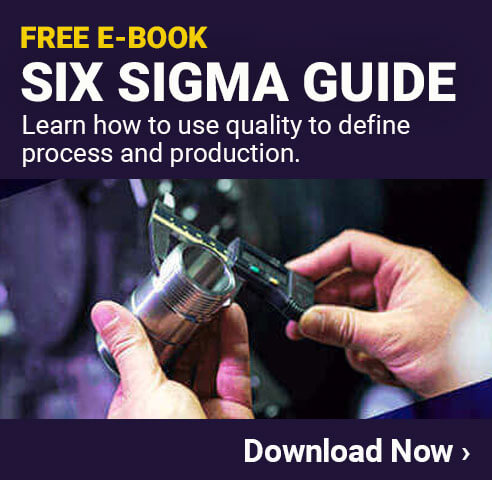
Developed by Motorola in the late 1980s, Six Sigma is an ideology that aims to reduce the number of product defects to near-zero levels. Defects are considered any aspect of a product that does not meet a customer’s standards, and any process making more than 3.4 defects per million products is considered inefficient. Needless to say, these are rigorous standards that may take some time to reach, but the five steps of Six Sigma make tracking and improving process efficiency relatively straightforward.
The Five Steps of Six Sigma
Often referred to by the acronym “DMAIC,” the five steps of Six Sigma form a data-driven cycle of improvement that will increasingly reduce product defects over time.
Define: This step focuses on clearly defining the goal of a process, available resources, potential trouble spots, and the overall business timeline. Essentially, it’s an attempt to review all of the existing knowledge on a process before efforts are made to change that process for the better.
Measure: Once extant data is consolidated, it’s time to establish current baselines for efficiency that can be used as the basis for improvement. It’s crucial to get good, useful data during this step, though how that data is collected will change depending on the process in question and the people working on the issue.
Analyze: Here, the problem hindering the process is identified and selected for elimination. It’s often helpful to work with members of the efficiency team to come up with a list of potential problems, before collecting data to determine which root causes truly need adjustment.
Improve: Once the problem is located, it’s time to implement a solution. What exactly that solution might be depends on the process and issue in question, but often the simplest solution proves more valuable than a complex fix.
Control: This step focuses on sustaining the improvements that have been put into place. Regular monitoring and an established control plan both ensure that process complications won’t return and allow for greater insight into how processes can be improved further.
Similar Glossary Terms
- Design for Six Sigma (DFSS)
- DMAIC
- DMADV
- Kaizen – Defined
- Overall Equipment Effectiveness (OEE) Defined
- C4
- TEAM Metrics
- Gemba Defined
- APQP (Advanced Product Quality Planning)


